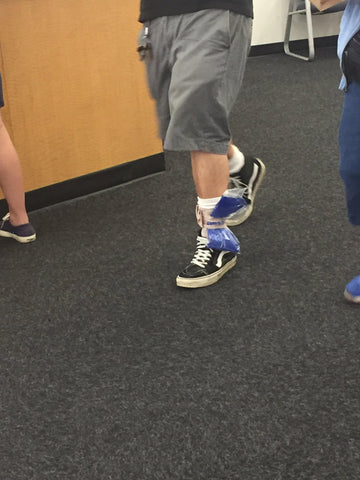Posted on April 03 2017
“Common Mistakes When Using An Ice Pack”

When dealing with an injury, your first instinct is often to grab an ice pack for your shoulder, or knee, etc and let the cool relief soothe the problem at hand. Of course, while ice packs are incredibly helpful, not knowing how to use an ice pack properly can actually lead to further injury and other problems. You need to know how to apply an ice pack the right way. The following are some common ice pack application mistakes people make, as well as some useful tips on how to avoid them and additional damage.
The Most Common Mistakes When Using an Ice Pack

Ice Pack Application on Unprotected Skin: When you’ve got a burn, scrape, blemish, or severe pain, you want the healing relief of a cold compress straight away. However, slapping an ice pack on unprotected skin can actually lead to further damage if you aren’t careful such as frostbite. When you expose skin to cold, it will reduce pain and swelling, but it can also stop flow of blood. With this in mind, always wrap your ice pack in a clean towel or cloth to administer helpful, but regulated cold. 
Applying the Pack for Too Long: As an ice pack can disrupt the flow of blood if applied directly to the skin, it can also do damage to protected skin if left on for too long, like while you’re sleeping. When an ice pack is left in the same spot for too long, you run the risk of causing nerve damage, which is almost always a permanent condition. Avoid further misery by following any instructions given by a doctor. If you’re using a home-made pack and are not sure how long to apply the cold compress, a good rule of thumb is to remove the pack after ten minutes and wait at least another five before reapplying. The key is to give your skin a rest when you feel able.
Avoiding Elevation of the Injury: If you’ve got an injury that’s swollen, you’re going to need more than an ice pack. An ice pack can really only do so much, but if an injury, especially one on the extremities, is not shrinking, it’s likely because elevation is needed as well. If you avoid elevation, chances are you will reduce pain by numbing the affected area with an ice pack, but won’t do much for the swelling. With this in mind, be sure to lift the affected body part above the level of your heart, and then apply the ice pack. The combination of the pack and elevation will reduce both swelling and pain, leading to a speedier recovery.
Not Resting: With any injury, rest is an important factor. Knowing how to use an ice pack isn't enough. If you’re icing a wound or injury but moving forward with your daily activities, chances are little healing will occur. Ice packs are not a cure all, which is why the combination of rest and relaxation are imperative to the ice pack really doing its stuff. The human healing process relies heavily on rest, otherwise you’re just doing the equivalent to slapping on band-aid. Sure, it will help for a while, but without rest, the ice pack is basically obsolete. Make a point to get in bed or park on the couch, elevate the injured body part if needed, and then apply the ice pack while you engage in some much-needed rest.

Ice packs are certainly wonderful inventions for when you’ve got a bad sprain, a wound, an abrasion, or another kind of ache or pain. However, if you don't know how to use an ice pack properly, you won’t find relief or healing. Be sure to avoid the above ice pack application mistakes in order to reach optimal healing of any iced injury over time. And if you have a region-specific injury, consider using an ActiveWrap therapeutic product like our Heated Back Wrap/Ice Pack to help you treat your pain with cryotherapy.
